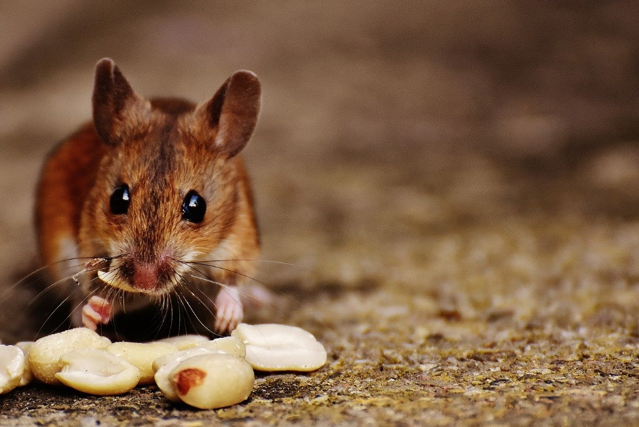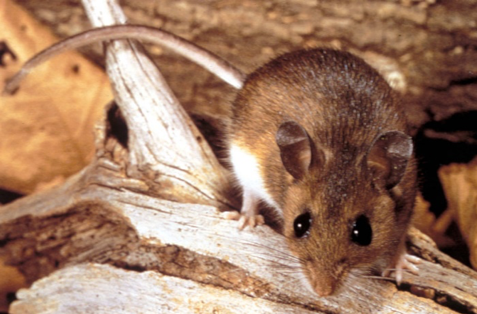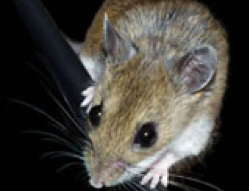
Serving Northeast & Central PA | Lehigh Valley | Pocono Mountains
House mice are the most common type of rodent that infests homes in Pennsylvania. They are 2.5” to 3.5”, weigh about 1/2oz to 1oz, and have fur that is typically gray, turning to white on its underside. Mice are explorers. The will travel around your home, attempting to find new food. When new construction is done, they will inhibit the structure. Their nesting sites are usually dark and secluded, making spaces such as attics a common infestation area. Both homeowners and business owners suffer from house mouse infestations every year. Because they are so heavily populated, house mice have adapted to thriving in alongside humans in urban and residential structures. Although mouse activity is heaviest in the fall and winter when they seek out shelter from the cold, mouse infestations can happen year-round.
Why do I have mice in my home?
What many homeowners don’t realize is that mice can squeeze through holes much smaller than their body size, making it possible for them to into your home through even the smallest of holes on the exterior of your home. Mice can actually fit into holes as small as a dime and can quickly slip into your home unnoticed. If you take a walk around the exterior of your home and notice any openings, no matter how small, that could be a point-of-entry. Mice can enter within small openings near electrical, gas, water or even air conditioning connections that lead into your home. There may also be gaps that aren’t visibly accessible which are covered by siding or moldings that can allow rodents to get in. Rodents can find entry points that you might not even be aware of.
A mouse’s food source isn’t limited to what we perceive as a food source. A food source for rodents can include bird seeds or even grass seeds, so if you have those readily available in your garage, you should use it up or store it in a heavy-duty container to keep the mice out. Nests can be found pretty much anywhere within a home or on the property. The most common hiding places for mice nests are:
- Wall Voids
- Insulation
- Attics
- Under Refrigerators
- Under Stoves
- Under Dishwashers
Secure and protected areas with little activity that provide close access to food and water are ideal locations for mouse nesting.
How can I tell if I have mice?
Mice only need a ¼ inch gap to enter your home, so homeowners need to seal up any obvious gaps around entry doors, garage doors and utility penetration points that are a ¼ of an inch or larger. Mouse activity can be present year round.
- Droppings – Mice eat constantly during their waking hours, which is a lot for their little bodies. Droppings are left behind and will appear to be black or brown in color and the shape of a grain of rice.
- Scratching – Mice are nocturnal. If you hear light scratching in your home at night, most likely coming from your attic, it could be mice.
- Tampered food – While in search of shelter, mice are also in search of a food source. It’s much easier to eat food from your pantry than search for food outside in the elements. Signs of tampered food are cereal boxes or other pantry items that look like they were chewed through along the edges.
- Mice – You may actually see mice! They crawl along edges of walls so you probably won’t see them running through the middle of a room.
Should I be concerned about mice?

Having rodents inside your home can cause major serious sanitation issues. Because they are so small, mice need to eat very frequently while they are awake at night. Unfortunately, this leads to very large amounts of droppings (usually the first sign of mouse activity) and urine wherever they go. Salmonella bacteria from rodent feces makes food poisoning a real concern when they get into your kitchen. Simply preparing a meal in the kitchen will be risky. Mice are excellent climbers. Once they claim your home as their own, mice and climb through holes between floors of your home and show up in your basement and living room all in the same day. Their oily bodies leave what are called “rub marks,” that can stain frequently used entry points.
How can I get rid of mice?
Begin by conducting a visual inspection along the exterior perimeter of your home followed by an interior inspection, by doing so, you will be alerted of any possible entry points.
If you find small holes or cracks in the foundation, fill them in with either caulk, metal or cement. By filling in the entry points, this will greatly reduce your chances of having a family of mice make their home inside of your house. Also, be sure that no gap exists at the base of garage doors and entry doors into the home because mice will follow air currents in to find their way into your home.
Mice are attracted to your home because they have found a food source and are not being disturbed, allowing them to multiply quickly. Preventing mouse infestations can be as easy as following the guidelines below.
Food – Make it a habit to sweep up crumbs in your kitchen and transfer pantry items such as cereal that comes in boxes into sealed plastic containers.
Entry Points – Seal cracks and crevices around the foundation of your home.
Visual Inspection – Perform visual inspections. Do you see mouse droppings? Are you hearing scratching at night? The sooner you act on the problem, the sooner it can be resolved.
If you are still struggling to control the mice in your home or if the infestation is getting out of hand, it’s time to call a pest control professional.

How do I keep mice out of my garage?
There are several dos and don’ts of mouse elimination if you are going to try mouse control on your own.
DO
✔ Seal gaps- Use caulk and steel wool to fill in small holes and gaps leading into the garage.
✔ Clean up your garage- Grass seed and dog food strewn around the garage is an endless buffet for mice.
✔ Declutter and reorganize- Don’t keep items in cardboard boxes. Use sealed containers and bins. If there is more floor space open, you have fewer hiding places and a better chance of finding potential nesting spots.
✔ Cut back bushes and plants- By trimming back vegetation that comes into contact with the foundation of your garage, mice will have less space to hide and gather.
DON’T
X Use sound machines or ultrasonic repellers- They have been proven time and time again to be ineffective.
X Rely on essential oils or scents- Mice are highly adaptable and aren’t deterred by a little bit of peppermint oil when they find a goldmine of bird seed in your garage.
X Trust your cat- Yes, cats can catch mice. However, it’s not a reliable form of pest control when mice are multiplying and infesting.
X Cover your garage in cayenne pepper- Our pest control technicians run into this issue a lot. They are called to a home that has droppings everywhere, including on and around cayenne pepper that was used as a “natural barrier.” If it was this easy to get rid of mice, pest control companies would be out of business.
How does Seitz get rid of mice?

Home Protection Plans & One-Time Services
Our Home Protection Plans provide full coverage for mice and other common household pests, all year-round. Monthly or quarterly service options are available based on your unique needs. Unlimited technician re-visits are available to ensure that your pest problem is under control. If you are looking for a short-term solution to an active mouse infestation in your home, the One-Time Mouse Elimination Plan may be the best option for you. This plan does not provide coverage for any additional pests. Rodent exclusion services are also available to permanently seal your home against further infestations.
Fill out the contact form on this page or give Seitz Bros. a call today to set up a free rodent inspection at your home!
What are Mice Pest Control in Pennsylvania & New Jersey?
Serving Northeast & Central PA | Lehigh Valley | Pocono Mountains | Western NJ
